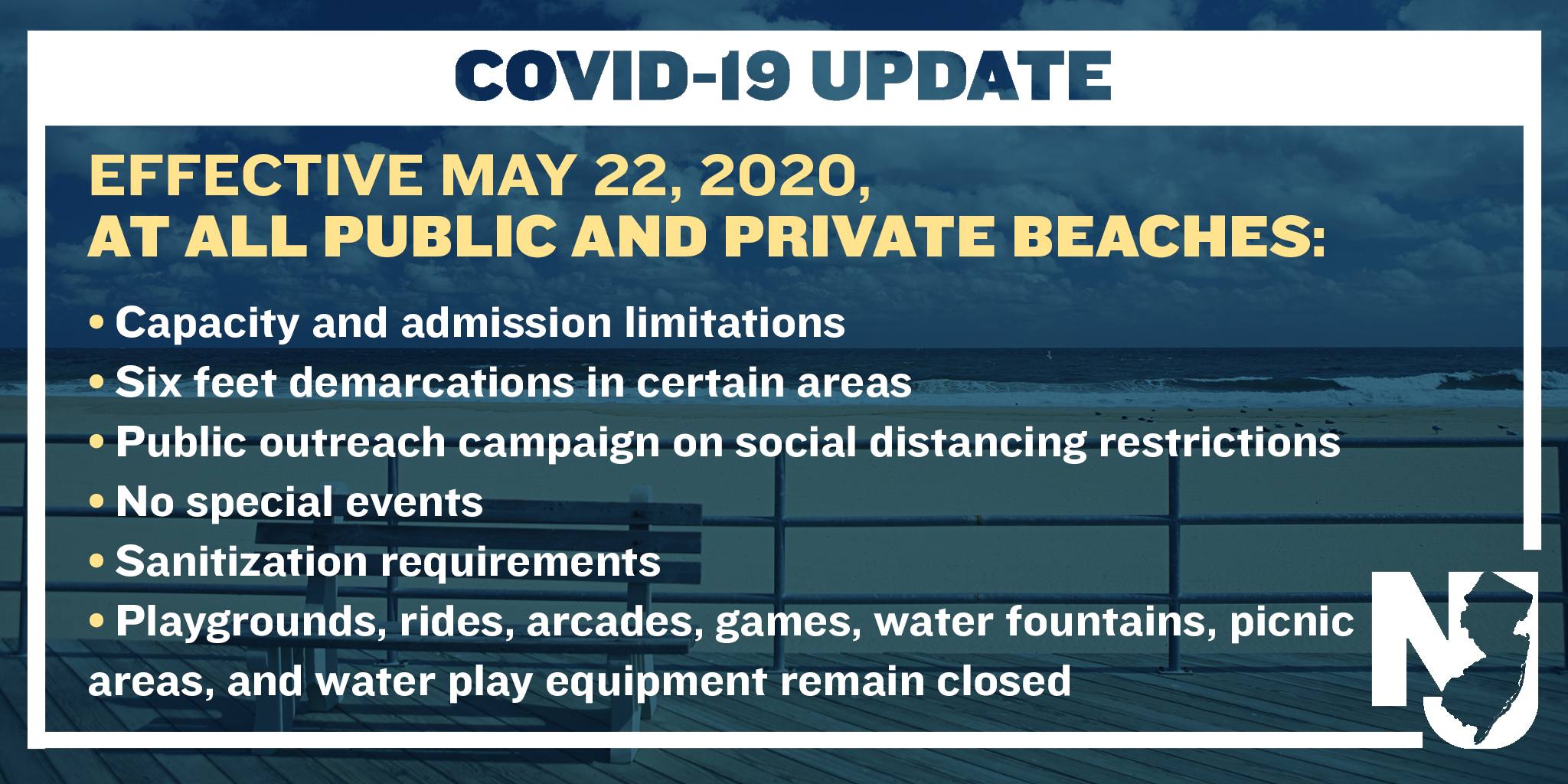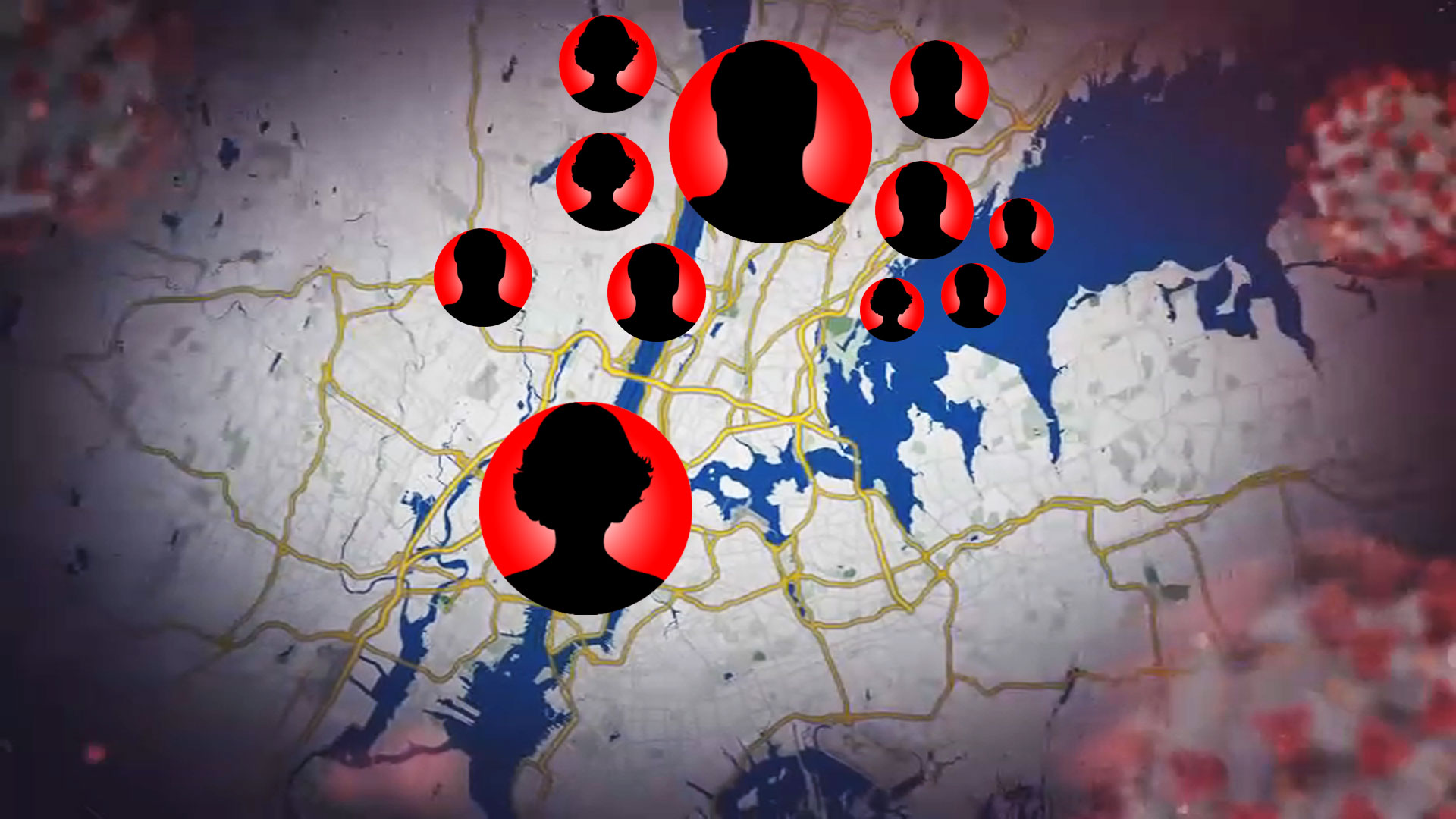What to Know
- More than 40,000 people in the tri-state area have died because of COVID-19, including NYC's probable fatalities; NJ's death toll is poised to eclipse 10,000 on Friday, while NYC eclipsed 20,000 Thursday
- New York's Mohawk Valley, North Country, Southern Tier, Central New York and Finger Lakes regions can start to reopen when "PAUSE" expires at 11:59 p.m. Friday. NYC and Long Island have met four of seven benchmarks
- New Jersey Gov. Phil Murphy says the Jersey Shore will be open in time for Memorial Day weekend, with restrictions. He has eased restrictions on construction, retail stores and drive-ins in the state
In less than 12 hours, for the first time in roughly two months, parts of New York will reopen for business — a beacon of hope amid the dark tragedy that continues to shroud the virus-ravaged tri-state area and much of the nation. Another positive sign: New Jersey's beaches will reopen for Memorial Day weekend.
These encouraging milestones come in the face of far more grim ones: New York City's death toll eclipsed 20,000 on Thursday, as the five boroughs reported more than 5,000 probable virus fatalities on top of nearly 15,000 confirmed by the state. At the same time, the number of tri-state lives lost soared above 40,000. Still, the three governors say their states have flattened the curve to a degree that they feel comfortable taking initial, calculated steps in reopening.
Five of 10 New York regions now meet Gov. Andrew Cuomo's criteria to do so, and had "stay-at-home" orders lifted late Thursday. The latest newcomer is Central New York, joining Mohawk Valley, the North Country, Southern Tier and the Finger Lakes in hitting all seven benchmarks required to enter Phase I. Cuomo's office said businesses in those regions can open anytime Friday, but did so with a warning.
"You open a business tomorrow with 50 employees and one is sick, you can infect 30 in one afternoon," Cuomo said. Because of that risk, businesses must submit in writing a pledge that employees will ear masks and practice social distancing.
"People are gonna run out the door and say hallelujah — (it) doesn't mean the problem has gone away," the governor said.
Long Island and New York City are about halfway there, by Cuomo's standards, as is Western New York. The Capital Region and Mid-Hudson have checked off five of the seven benchmarks. The governor extended his "PAUSE" order for these regions until June 13, unless any of those areas meet the metrics to open up before then.
Mayor Bill de Blasio told CNN Thursday he's talking to bar and restaurant owners about how to reopen, and the plan is still for schools to resume normally in September. No final decisions will be made on either any time soon.
"We’re going to be slow and steady here in New York City, we’re going to be very careful," the mayor said. "The last things we’re going to be able to do are where there are large crowds, that’s months away."
New York City has met just four of Cuomo's seven reopening benchmarks, all of which are tied in some way to infection rate and medical capacity. All three of de Blasio's key indicators were trending in the right direction as of Thursday, with new daily hospital admissions, a current roadblock on its path to reopening, showing a marked decline, along with the number of patients in intensive care. Though the mayor said that he still would like to be testing far more people, saying "If I had my way, we'd be at hundred of thousands."
Once infections are contained, Cuomo wants each region to ensure it has the mechanisms in place to prevent resurgence. That means keeping nearly a third of hospital and ICU beds available and implementing robust testing and contract tracing infrastructures. It means establishing regional control rooms that can monitor developments and literally act as circuit breakers, immediately pausing reopening if any given region slips on a benchmark at any given time.
That's a worst-case scenario, Cuomo says. But given infection spikes he has seen in other countries -- and U.S. states -- that opened too early, it's an out he has to leave available. Asked Thursday about reopening houses of worship, Cuomo said updated guidance on that would come when the state modifies its directive banning large gatherings. He didn't offer a timeline.
"Follow the data. Follow the science. Follow the metrics. That’s how New York reopens," Cuomo said.
The governor also said the state was working on a daily dashboard to give people detailed information on where their counties, not just their regions, stand on reopening. His goal is to arm New Yorkers with more concrete, complete local data they need to safely live their daily lives.
Region by Region Status
Source: New York State; Report as of May 11
New Jersey Gov. Phil Murphy is equally as conscious of the need to move meticulously and cautiously. His state now reports more deaths and cases per 100,000 residents than any in the country, yet Murphy says New Jersey is ready to take its next small steps, given its overall success in flattening the curve.
A day after easing restrictions on construction, retail stores and drive-ins, Murphy announced Thursday all the state's public and private beaches, including along the Jersey Shore, will reopen on May 22, just in time for Memorial Day weekend. Murphy said the move was coordinated with the state's neighbors in New York, Connecticut and Delaware. Restroom facilities in state and county parks will also reopen, provided they undergo frequent and proper cleaning.
"We want everybody to fun, but we want everybody to be safe," Murphy said Thursday. "The Shore is central to our Jersey identity and we want to ensure that families can safely enjoy it this summer."
To that end, he announced a series of restrictions that will come when the state's beaches reopen later this month. Murphy said the state is also reviewing guidance on pools and charter fishing programs.

Mayor de Blasio has also pledged to share New York City's plans for summer. No one expects it to be a typical one.
Meanwhile, the Centers for Disease Control put out some of their long-delayed guidance to help individual businesses and groups with reopening. The guide provides advice and tools for schools, workplaces, camps, childcare centers, mass transit systems, and bars and restaurants to reopen. The CDC originally also authored a document for churches and other religious facilities, but that wasn't posted Thursday, but the agency declined to say why.
The agency also had prepared even more extensive guidance — about 57 pages of it — that also was not posted.
The decision tools have been undergoing review by different federal officials, and they've been edited from earlier versions. For example, an earlier draft of the one-page document on camps asked organizers if their program would limit attendance to people who live nearby. If the answer was no, the camp was advised not to reopen. That local attendance limitation was dropped and was not in the version posted Thursday.
And in that document and others, language has been dropped that asked if the organization is in a community that is still requiring significant disease mitigation. If the answer was yes, the organization had been advised not to reopen.
Tragedy Darkens Road to Reopening
In the last two months, New York state has confirmed 22,170 virus deaths, with Cuomo adding another 157 names Thursday. The state has averaged roughly 358 deaths a day since reporting its first on March 14, though the daily tolls this week have fallen below 200.
New York City reports another 5,057 probable virus deaths on top of the 14,959 confirmed by the state; combined, those tallies bring the city's tragic toll to 20,016. A recent CDC report indicates that may not fully capture the scope of the tragedy.
Perhaps because of toll the virus has taken on the five boroughs, City Comptroller Scott Stringer is launching an investigation to see if NYC was ever really ready to respond to the pandemic. He will be looking into how city officials and agencies prepared, beginning Nov. 1 of last year until the statewide "stay-at-home" order took effect March 22. Stringer said his goal is to identify weaknesses in City Hall's response, so it'll be better prepared for future emergencies.
How many more could we lose? Virus projection models abound -- and are as variant as they are plentiful. Researchers at the University of Massachusetts Amherst have developed a composite model of sorts that incorporates 36 different models from 20 teams. That model, called the COVID-19 forecast hub, projects New York will ultimately lose 31,740 to the virus by June 6.
New Jersey, reporting 9,946 fatalities to date, could see a total of 12,420 fatalities by that time. Connecticut could lose another 993 lives on top of the 3,219 it has already. With the tri-state's confirmed toll now just over 35,000, and topping 40,000 with New York City's probables, the forecast hub projects the three states could see nearly 14,000 more deaths over the next four weeks alone.
The latest projections, updated Thursday, suggest the U.S. death toll will ultimately reach 112,647 by June 6, with a 10 percent chance the toll could top 123,000 and a 10 percent chance it could fall below 104,167.
Currently, NBC News estimates the U.S. has lost more than 86,000 people. Confirmed nationwide infections topped 1.4 million late Wednesday, while deaths topped 300,000 worldwide, according to Johns Hopkins.
The tri-state area accounts for about 40 percent of those: 343,051 in New York (nearly 190,000 of those in NYC), 142,704 in New Jersey and 35,464 in Connecticut.
“We continue to see increasing consensus among the models, which are showing similar upward trends, but there is still quite a bit of uncertainty about what will happen four weeks from now," the project's leader, Nicholas Reich, director of the UMass Influenza Forecasting Center of Excellence and associate professor of biostatistics and epidemiology in the School of Public Health and Health Sciences, said in a statement. "Among seven models, the spread of best-guess predictions for deaths in the U.S. by early June ranges from around 103,000 to 120,000. This range covers 17,000 deaths, which is still sometimes more than the number of people who die in a flu season. Two weeks ago, the spread between models was almost twice as high, around 35,000.”
Tracking Coronavirus in Tri-State
There's so much about this virus that not even the globe's top scientists fully understand. They learn more each day, adding to the complexity of a virus that has proven mysteriously adaptable.
Asymptomatic people can transmit it. Antibody immunity is not proven. The virus may not largely spare children, as was previously believed. Instead, it may manifest in a far more inconspicuous and potentially deadly way. More than 100 cases of a new pediatric inflammatory syndrome possibly linked to COVID-19 have been identified in New York, and another 17 in New Jersey. Most of the cases involve children younger than 9, and the vast majority are ending up in the ICU; at least three kids have died, two more deaths are under investigation.



